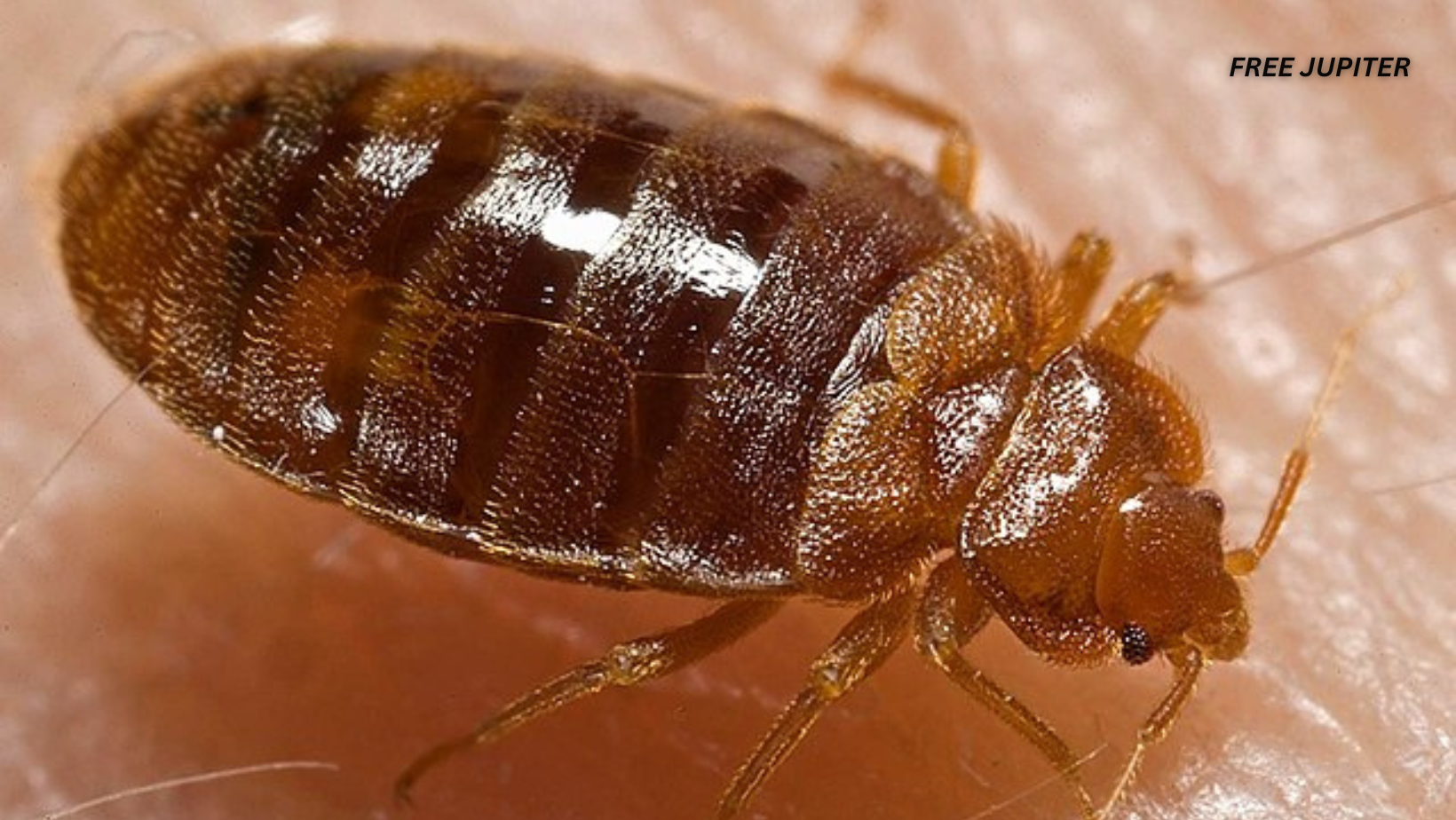Friendly Note: FreeJupiter.com shares general info for curious minds 🌟 Please fact-check all claims—and always check health matters with a professional 💙
Long before the rise of modern cities, before the invention of agriculture, and even before humans had settled into caves for the long haul, an uninvited guest had already made itself at home. It didn’t bark, chirp, or growl—it simply crawled into our spaces and never left. That clingy companion? None other than the humble bed bug, which, according to recent findings, has been trailing humans for an astonishing 60,000 years.
These tiny, blood-loving insects may not win any popularity contests, but they do hold a unique title: the very first known pest to zero in on humans as their preferred host. While fleas, lice, and mosquitoes may dominate our modern pest paranoia, it turns out that bed bugs were ahead of the curve and by several millennia at that.
Tracking the World’s First Human Pest
Thanks to a genetic deep dive by researchers at Virginia Tech, two distinct bed bug family trees have been placed under the microscope. One lineage preferred to stick with bats, its traditional hosts, while the other opted for a more intimate relationship—with us. What the scientists discovered not only sheds light on the stubborn resilience of these insects but also paints a picture of an evolutionary hitchhiker that followed us out of caves and into cities.
Dr. Lindsay Miles, a leading entomologist at Virginia Tech and the study’s lead author, explained the research focus: “We were examining effective population size—that is, the number of individuals that contribute genes to the next generation. This helps reconstruct the history of species populations over time.”
Both bug populations experienced a dip during the Last Glacial Maximum—a time of peak global chill—but the bat-loving branch never recovered. Their numbers are still sliding downward. Meanwhile, the group that had cozied up to early humans did the opposite: it bounced back and boomed.
This rebound wasn’t random. It turns out, as humans gradually shifted away from caves and formed structured communities, the bed bugs followed suit. They transitioned from rock walls to thatched huts, to beds, mattresses, and city apartments with remarkable ease.
Bed Bugs: From Bats to Humans (and They’ve Never Looked Back)
Professor Warren Booth, another expert on the Virginia Tech team, offers a compelling scenario. “As Homo sapiens left their cave dwellings roughly 60,000 years ago, they brought some companions with them—whether knowingly or not. Bed bugs had already been sharing those caves, and when humans relocated, a portion of that bug population came along for the ride.”
That migration marked a turning point. The human-associated bed bug (Cimex lectularius) and its cousin, the tropical bed bug (Cimex hemipterus), adapted to their new hosts and habitats. Over the centuries, their life cycles and behaviors began aligning more with ours than with any other animal.
And while humans moved through eras of stone tools, empires, and electric lighting, bed bugs quietly stuck with us through it all. They’ve hitchhiked across continents, crept into luggage, and snuck into hotels and dorm rooms. For them, it’s been a journey of uninterrupted opportunity.
Read more: Experts Explain Shocking Simulation That Reveals What Eating One Meal a Day Does to Your Body
A Comeback Story With Chemical Resistance
Although bed bugs have long been our uninvited sleepover guests, they weren’t always so visible. In fact, during the mid-20th century, they nearly disappeared—thanks to DDT, the infamous chemical compound used to wipe out many pests. For a time, it worked.
But the victory was short-lived.
“Bed bugs were thought to be gone, practically wiped out in many parts of the world,” Booth recalled. “But within five years of DDT’s widespread use, resistant populations started showing up again. They adapted astonishingly fast.”
And adapt they did. A genetic mutation helped them shake off the effects of insecticides that had once devastated their numbers. Since the decline of DDT and the rise of global travel and dense urban living, their populations have surged dramatically. In Australia alone, reports from pest management professionals in 2006 revealed a shocking 4,500% spike in infestations over just one year.
The United States hasn’t been spared either. Every state now reports bed bug presence, especially in high-density regions. Hotels, apartment complexes, college dorms—you name it, they’ve probably checked in.
Why Should We Care About These Ancient Freeloaders?
Aside from being a literal pain—leaving itchy welts and sleepless nights in their wake—bed bugs offer a unique lens into human history and future challenges. Their evolutionary persistence and uncanny ability to develop chemical resistance make them valuable models for understanding how pests can adapt in rapidly changing urban environments.
For scientists designing disease prediction models or studying population shifts, bed bugs serve as a kind of unwelcome but informative case study. Their demographic shifts appear to mirror those of humans, suggesting they’re more tightly interwoven with our story than previously believed.
As the researchers noted, “The timing and magnitude of demographic patterns in the human-associated lineage align with key moments in human development—like the birth of cities.” In other words, bed bugs didn’t just follow us home—they followed us into civilization.
This revelation positions bed bugs as possibly the first urban pest species—well before rats and roaches took center stage.
Read more: Scientists Have Found The ‘Off’ Switch For Anxiety Without Any Side Effects
They May Be Persistent, But They’re Not Indestructible
Despite their durability, bed bugs aren’t unstoppable. The U.S. Environmental Protection Agency offers detailed guides on dealing with infestations using non-toxic methods, making it possible for individuals to tackle the problem themselves if needed.
While they’re irritating and difficult to remove, there is one small comfort: bed bugs do not transmit diseases. Unlike mosquitoes or ticks, they aren’t vectors for illnesses. Their bites may swell and cause allergic reactions in some individuals, but the main threat they pose is psychological—interfering with peace of mind and restful sleep.
Bed Bug vs. Cockroach: Who Wins the Survival Showdown?
As far as the crown for “ultimate survivor” goes, entomologists are still placing their bets. While bed bugs are experts at clinging to a very specific host (us), they’re specialists. That focus gives them an edge in some ways—but also a major weakness.
Compare that to the German cockroach (Blattella germanica), a generalist feeder that can thrive on nearly any food source and endure broader environmental shifts. Cockroaches are also notorious for developing resistance to a wide range of chemical controls—and they have one more twist in their evolutionary tale: they eat bed bugs.
Yes, you read that correctly. In the great insect food chain, cockroaches sometimes feast on their bloodsucking roommates.
So, in a collapsing world or dystopian future, you might be better off betting on the cockroach.
Still Sleeping With the Enemy
While the idea of a 60,000-year bug-human relationship might inspire unease, it also offers a rare insight into how certain species have carved out a niche alongside us. Bed bugs have mastered the art of survival not through brute strength or speed, but through patience, adaptation, and an uncanny ability to stay under the radar—until they make themselves very known.
Whether you admire them for their tenacity or curse their very existence, one thing is clear: these ancient hitchhikers are not leaving anytime soon. And as long as there are warm beds, dense cities, and humans traveling the globe, they’ll have no shortage of places to call home.
Just remember to check your sheets.










